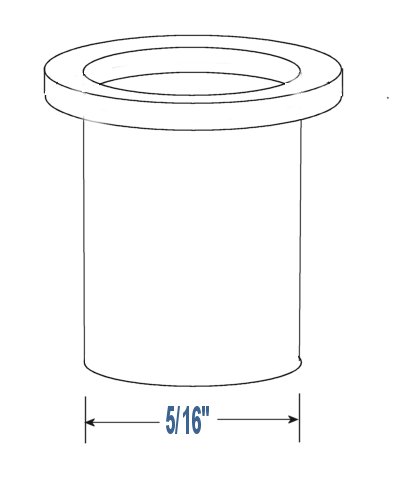How can I tune my drones to a lower pitch...
I've had the opportunity to play fairly often in Concert B-flat (e.g, generally
for folk groups, concert bands or brass ensembles) and, less
frequently, in Concert A (e.g., usually for orchestral settings). With the approach below, I’ve had excellent luck using
several different brands of synthetic drone reeds in my Lawries.
For just a moment, think about this principle: When you blow gently into a drone reed, it gives a low
pitch. As you blow harder, the pitch rises. What is needed then, is to
reduce the air flow through the reed. Lower flow means
that the velocity through the reed is lower. With less air flow, the reed
tongue will vibrate more slowly and will be able to pitch lower. We can do
this by adding resistance to the air flow.
Without going into the mathematics of flow capacitance and impedance as a
function of frequency, what I've done is to use a piece of thin-wall brass
tubing to restrict air flow through the drones. I used K&S brass
tubing to make these parts. It always available at a hobby store and
usually at hardware stores. The pieces described slip down into the top of
the lower drone sections (i.e., the other end of the section which holds the
drone reed) and is hidden inside the tuning chambers.
The lengths and diameters you need will depend on you pipes - and maybe even on
your drone reeds. I use the biggest tubing that would slip down the drone
bore. The bass will require something like 9/32" or 5/16" ID and the
tenors may be about 1/32" ID less. The amount you will lower the pitch
depends upon the length of the inserted sleeve.
I have two sets of these inserts for my Lawries.
The B-flat set is 1.25 inches long for the tenor (no bass insert is needed on my
pipes for B-flat) and flanged (brazed to a brass washer) so that it sits atop the
lower sections. I wrap them with Teflon or masking tape so that they don't
move and don't scratch the bores. The A tenor set is 2.00 long and the bass is 2.50 inches.
 Here's
a picture of a "pre-made" insert (bushing) that I found at hardware store in the
drawers of miscellaneous parts. It's made of nylon, comes in a couple different lengths and you can cut it off
to suit your needs. I think it was a bushing for a sliding glass door
glide.
Here's
a picture of a "pre-made" insert (bushing) that I found at hardware store in the
drawers of miscellaneous parts. It's made of nylon, comes in a couple different lengths and you can cut it off
to suit your needs. I think it was a bushing for a sliding glass door
glide.
I used the
B-flat brass or the nylon inserts above routinely in Dunbar P3 tenors because they tuned too high otherwise.
With the inserts in the tenors, the P3s worked fine with any modern reed. (i.e.,
no need for "drone extenders")
It's not necessary to have the top flange, but it does prevent loosing the
piece down the bore.
Copyright S.K. MacLeod 1996-2025
 Here's
a picture of a "pre-made" insert (bushing) that I found at hardware store in the
drawers of miscellaneous parts. It's made of nylon, comes in a couple different lengths and you can cut it off
to suit your needs. I think it was a bushing for a sliding glass door
glide.
Here's
a picture of a "pre-made" insert (bushing) that I found at hardware store in the
drawers of miscellaneous parts. It's made of nylon, comes in a couple different lengths and you can cut it off
to suit your needs. I think it was a bushing for a sliding glass door
glide.